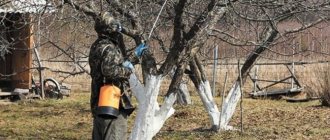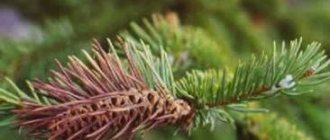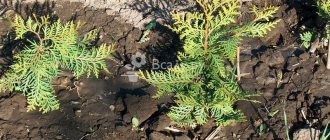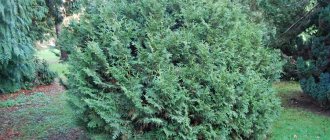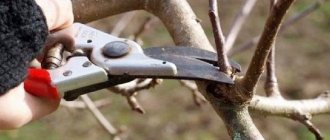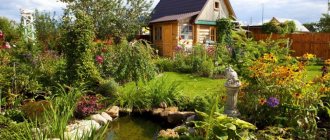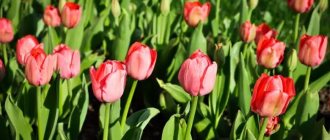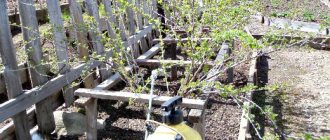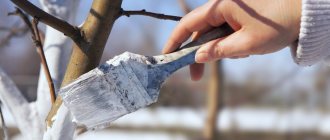Treatment of the garden in the fall of 2021 from pests and diseases is not limited to spraying plants from the tree trunk to the top of the crown with chemicals.
It is necessary to carry out sanitary pruning, remove plant debris and flying leaves, and whiten the trunks. Insecticides and fungicides only destroy fungal and insect spores remaining on the surface. If we neglect the above-mentioned measures, all pathogenic organisms that have managed to settle in for the winter will survive the frosts well and will be activated next year. Dear readers! For you, we have created communities on social networks in which useful articles and interesting ideas are published several times a day! Subscribe and receive useful content in a convenient format!
Why cultivate a garden in the fall?
In order to preserve their offspring, insects lay eggs on fallen leaves, under damaged tree bark, and in dried weeds. Pathogenic fungi, activated by warming, also overwinter in plant debris. In order not to waste time fighting pests and diseases during the growing season, they need to be destroyed in the fall.
Some gardeners carry out the treatment after the end of leaf fall, so as not to return to the site until spring. All cut off branches and twigs, fallen leaves are raked into heaps, and then taken outside the site and burned.
But you can use another option - spraying is carried out before all the foliage has flown around. Then the plant residues can be dug into the soil to provide the area with additional fertilizing. There is no need to be afraid of bud damage: when the trees have shed part of their crown, they have already closed and gone into a dormant state.
Attention!
The latter option cannot be used if the plants are heavily infected, there are visible signs of pest damage, or strong agents were used for treatment - Bordeaux mixture or copper sulfate.
You should not lay out fallen leaves on tree trunks like mulch, especially in warm autumn. Even after spraying, insects may have time to lay eggs. In addition, rodents can overwinter in the insulating layer.
How to use fungicides for autumn treatment of trees
MOST READ FROM PARTNERS
Ready-made fungicides are good because they are highly effective and adapted to combat the most common infections.
Among the most effective it should be noted.
Topaz
The product is used against fungal diseases. Suitable for both treating infestations in the garden and as a preventive measure. To make the result more effective, experienced summer residents recommend repeating after the first spraying.
Fundazol
An effective remedy that eliminates most fungal infections from the first procedure. Penetrates deep into the cortex and destroys pathogenic microflora.
Aktara
One of the best insecticides. They need to be sprayed before the trees go dormant. Suitable for spraying fallen leaves and tree trunks.
Aktellik
Protects fruit trees from a wide variety of pests. Process in warm, windless weather. Prepare the working solution in strict accordance with the instructions.
Maksim
MOST READ FROM PARTNERS
An effective product that can be used both for the garden and vegetable garden. It not only destroys existing diseases, but also protects the plant from new diseases. You can get the desired result in the fall by spraying even once.
Processing times
As already mentioned, you can prepare the garden for wintering and the next season two or three days after the leaves fall, or carry out the treatment in several stages. In this case, they dig up when the leaves begin to turn yellow. At the same time, fertilizers are applied. In the dry autumn, additional moisture-recharging irrigation is carried out, and after the end of leaf fall, the trunks are whitened, sanitary pruning is carried out, and plant residues are removed.
In central Russia and the Moscow region, conservation is carried out from the second half of September, and preventive spraying is carried out in mid-October. In the Urals, Siberia and the Leningrad region, it is advisable to complete all work in the first weeks of October, and in the southern regions - from late October to mid-November.
Attention!
But you can only say exactly what activities are needed and when by assessing the state of the garden and analyzing the weather conditions. The warmer the autumn, the later you should go to the site.
How to carry out autumn whitewashing of trees
Whitewashing is an effective and time-tested means of pest control. It is necessary to whiten the trunks before the onset of frost. The whitewashing process is carried out according to the following algorithm:
- slaked lime or special garden whitewash is used;
- the consistency of the solution should resemble thick sour cream in order to adhere well to the bark;
- trees and young seedlings must be whitened to a height of at least 1 meter;
- It is best to apply whitewash in several layers to make the procedure more effective.
Whitewashing also has a detrimental effect on most fungal diseases and eliminates larvae that may be hiding in the bark.
NOTE! Lime is effective against rodents. By whitening the trunks of young bushes and seedlings, you can avoid the attack of hares.
In what cases is it not advisable to treat fruit trees in the fall against diseases and pests?
In the fall, it is not recommended to spray the garden against diseases and pests if any tree or shrub bears fruit before the first frost.
Also you won't be able to spray at the end of November. Usually at this time there are night frosts, and spraying can be harmful.
When to treat trees in the fall of 2022 according to the lunar calendar from diseases and pests
For summer residents who cannot determine the appropriate period for spraying, you need to use the recommendations of the lunar calendar.
Preparing the garden for processing
After sanitary cleaning, you need to prepare the plants for spraying: not only remove damaged branches, but also clean the bark - remove traces of lichen and stains indicating fungal activity. To do this, it is convenient to use a brush with stiff bristles or a scraper. Once again, the tree trunk circles are cleaned of the remnants of fallen leaves.
Attention!
Spraying is carried out at air temperature +3…+5 °C. If there is frost, chemicals do not work.
If you miss the time and it gets colder, then the treatment is carried out in the morning, when it gets warmer. Then the chemicals will have time to be absorbed by the evening.
Biological preparations for treating trees in autumn
Biological drugs are highly effective. The drug is based on beneficial bacteria, which increase the immunity of trees and their resistance to the adverse effects of pathogenic microflora and insect pests.
IMPORTANT! Biological products can only be sprayed at temperatures not lower than +18, otherwise they will not work properly. Processing at +5 +7 degrees is practically useless.
Bitoxibacillin
The product is used to spray the garden against pests. After spraying, the bacteria penetrate deeply into the bark and lead to the death of the larvae and destroy the eggs. The drug can be used to spray the tree or the surrounding soil.
Fitosporin
The product is often used to combat fungal diseases. Effective against diseases such as scab and powdery mildew.
You can prepare a working solution by dissolving the drug in a small amount of water. Then we insist for 24 hours. Before use, dilute 2 tablespoons in 10 liters of water and treat the culture.
REFERENCE. Fitosporin shows results when used at a temperature not lower than +18.
Aktofit
Eliminates pests such as scale insects and spider mites. It affects not only adults, but also larvae. Suitable for both autumn and spring processing.
The best way to spray your garden in the fall against diseases and pests
The main means for spraying are copper or iron sulfate with the addition of urea and Bordeaux mixture. How else to treat the garden in the fall from pests and diseases after leaf fall depends on the problems that arose last season.
Attention!
Garden varnish will help against rotting. Mix one part rosin and two parts beeswax. Each component is melted separately, mixed, and one part of the melted fat is added. Processing the cuts will protect the area from rot.
Chemicals
To prepare Bordeaux mixture, dilute 100 g of copper sulfate in 5 liters of water, and separately - 100 g of quicklime in the same amount of liquid. Then both components are connected.
How to treat a garden in the fall with copper or iron sulfate: the substance is diluted in a ratio of 200–300 g per 10 liters if the plants are healthy, and 500 g per the same amount of liquid if there are lesions.
Attention!
Vitriol is poorly soluble in water. Therefore, first, liquid heated to 40 °C is added to it, and only then diluted to the required volume and poured into the sprayer.
If the solution is prepared with the addition of urea, then the proportions are as follows:
- 300 g of iron sulfate;
- 500 g urea;
- 200 g liquid soap;
- 20 g citric acid.
Treating trees in the fall with ready-made preparations: how to dilute them correctly
Ready-made preparations are often used to spray trees. The peculiarity of the drugs is that they are universal and can protect against many diseases and pests.
Copper sulfate
One of the most effective spraying agents against diseases and pests. It needs to be treated after the end of the growing season, that is, just before the onset of frost.
It is recommended to spray trees in the fall with a 3% solution of copper sulfate.
Bordeaux liquid
An effective remedy against diseases. Used both in autumn and spring. For the garden it is necessary to use Bordeaux mixture 1%. After the initial spraying, experts recommend repeating the spraying after 10 days.
inkstone
Iron sulfate is widely used in gardening. The remedy is very effective against fungal diseases. Suitable for spraying fruit trees, shrubs, including grapes. To spray, you need to prepare a 5% solution and treat the garden with it.
When to spray trees
The leaves have not fallen from our trees yet, and some seedlings are still vegetating: yesterday I replanted some and saw that young leaves were appearing on them. That is, we could talk about autumn spraying later, but in some regions it is already deep autumn, and for residents of the north this topic is quite relevant.
In principle, eradicating spraying could be dispensed with by replacing it with early spring treatment. Now there are all kinds of fungicides and insecticides on sale, but when making a choice, you need to pay attention to the temperature at which they work. Some fungicides are effective only at temperatures above 10 ⁰C, and they are not suitable for autumn treatment, which should be carried out at positive but low temperatures - 0-5 ⁰C.
Copper sulfate
Bordeaux mixture will be able to demonstrate a positive result on stone fruit trees, killing all insects and providing additional microfertilizers to the plants themselves. Vitriol can be used at any time of the year, but it is in the fall that the danger of burns on the leaves disappears.
This makes it possible to increase the concentration of the product, which increases the effectiveness of treatments. Copper sulfate shows equally good results regardless of the time of year, fighting powdery mildew, scab, putrefactive formations or stains of various origins.
Important!
For young trees under 6 years of age, 2 liters of liquid per stem is sufficient; for adult plants, at least 10 liters will have to be used.
inkstone
Iron sulfate has a powerful effect in the fight against the formation of moss and lichen, which not only themselves affect trees, but also create favorable conditions for insects to lay eggs. Processing provides additional nutrition to the bark, which is saturated with beneficial microelements before winter and can more easily withstand unfavorable weather.
Most often, this product is used when treating apple orchards, cherry and peach trees. A lack of vitriol is fraught with a decrease in yields. And preparing a special product is as simple as possible; you just need to mix 15 liters of water with 1 kilogram of the product.
